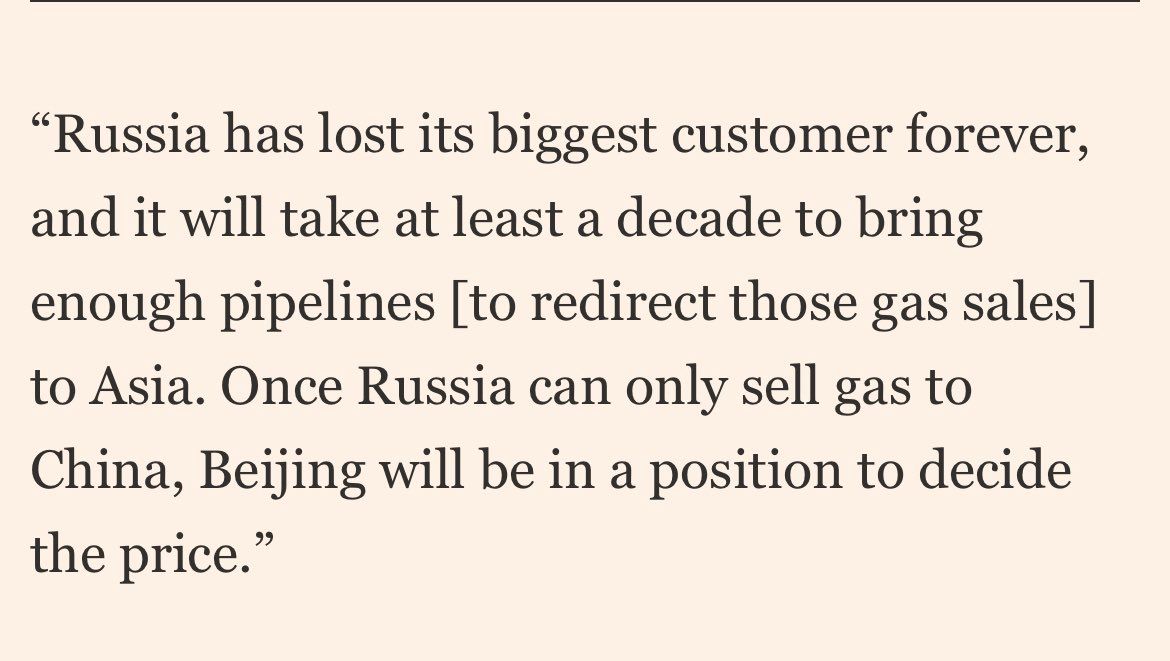Leaks in the pipeline - Nord Stream 1 & 2
-
How America Took Out The Nord Stream Pipeline
Last June, the Navy divers, operating under the cover of a widely publicized mid-summer NATO exercise known as BALTOPS 22, planted the remotely triggered explosives that, three months later, destroyed three of the four Nord Stream pipelines, according to a source with direct knowledge of the operational planning.
Two of the pipelines, which were known collectively as Nord Stream 1, had been providing Germany and much of Western Europe with cheap Russian natural gas for more than a decade. A second pair of pipelines, called Nord Stream 2, had been built but were not yet operational. Now, with Russian troops massing on the Ukrainian border and the bloodiest war in Europe since 1945 looming, President Joseph Biden saw the pipelines as a vehicle for Vladimir Putin to weaponize natural gas for his political and territorial ambitions.
Asked for comment, Adrienne Watson, a White House spokesperson, said in an email, “This is false and complete fiction.” Tammy Thorp, a spokesperson for the Central Intelligence Agency, similarly wrote: “This claim is completely and utterly false.”
Biden’s decision to sabotage the pipelines came after more than nine months of highly secret back and forth debate inside Washington’s national security community about how to best achieve that goal. For much of that time, the issue was not whether to do the mission, but how to get it done with no overt clue as to who was responsible.
There was a vital bureaucratic reason for relying on the graduates of the center’s hardcore diving school in Panama City. The divers were Navy only, and not members of America’s Special Forces Command, whose covert operations must be reported to Congress and briefed in advance to the Senate and House leadership—the so-called Gang of Eight. The Biden Administration was doing everything possible to avoid leaks as the planning took place late in 2021 and into the first months of 2022.
-
Wait, what?
-
Jesus, he’s still alive?
Could be true, but to be honest I haven’t put much stock in his writings in decades.
@jon-nyc said in Leaks in the pipeline - Nord Stream 1 & 2:
Jesus, he’s still alive?
I was surprised to see his name also. He's 85 years old.
I haven’t put much stock in his writings in decades.
Hersh first gained recognition in 1969 for exposing the My Lai Massacre and its cover-up during the Vietnam War, for which he received the 1970 Pulitzer Prize for International Reporting. During the 1970s, Hersh covered the Watergate scandal for The New York Times and revealed the clandestine bombing of Cambodia. In 2004, he reported on the U.S. military's mistreatment of detainees at Abu Ghraib prison. He has also won two National Magazine Awards and five George Polk Awards. In 2004, he received the George Orwell Award.
Critics have accused Hersh of being a conspiracy theorist. He has been criticised for contradicting the official account of the killing of Osama Bin Laden and for questioning the claim that the Syrian government used chemical weapons on Syrian civilians.In 2015, Vox's Max Fisher wrote that "Hersh has appeared increasingly to have gone off the rails. His stories, often alleging vast and shadowy conspiracies, have made startling — and often internally inconsistent — accusations, based on little or no proof beyond a handful of anonymous "officials".
-
Well the Kremlin is applauding Hersh’s attempt at “investigative journalism” with this report:
Who knows, but perhaps the Kremlin commissioned the report?
-
Germany: No evidence the Russians did it.
German investigators currently have no evidence that Russia is behind the explosions on the Nord Stream 1 and 2 gas pipelines, German Attorney General Peter Frank told Die Welt.
Frank said Russian involvement couldn’t be proven "at the moment" as the investigations are ongoing.
On Sept. 26-28, four leaks were discovered in the Nord Stream 1 and 2 pipelines in the Baltic sea that were built to supply natural gas from Russia to Europe. Following the leaks, several Western officials, including U.S. President Joe Biden, called them a “deliberate act of sabotage.”
Russian submarines were seen on Sept. 24-25 near the areas where the leaks were discovered, CNN reported, citing an unnamed Western intelligence official. Russia denied its responsibility for the explosions.
-
Blowing Holes in Seymour Hersh's Pipe Dream
Seymour Hersh’s recent Substack post claims to provide a highly detailed account of a covert US operation to destroy the Nord Stream pipelines in order to ensure that Russia would be unable to supply Germany with natural gas through them. All the information in Hersh’s post reportedly comes from a single unnamed source, who appears to have had direct access to every step of the planning and execution of this highly secretive operation.
When first reading through Hersh’s account of the events, the level of detail he provides could add credence to his story. Unfortunately for Hersh’s story, the high level of detail is also where the entire story begins to unravel and fall apart. It is often stated that people who lie have a tendency to add too much superfluous detail to their accounts. This attempt to “cover all bases” is in many cases what trips these people up. Extra details add extra points of reference that can be crosschecked and examined. In Hersh’s case, this is exactly what appears to have happened. On the surface level, the level of detail checks out to laymen or people without more niche knowledge of the subject matter mentioned. When you look closer though, the entire story begins to show massive glaring holes and specific details can be debunked.
